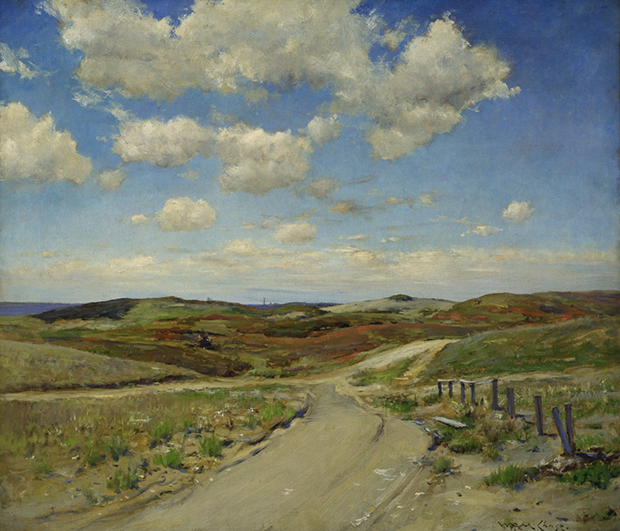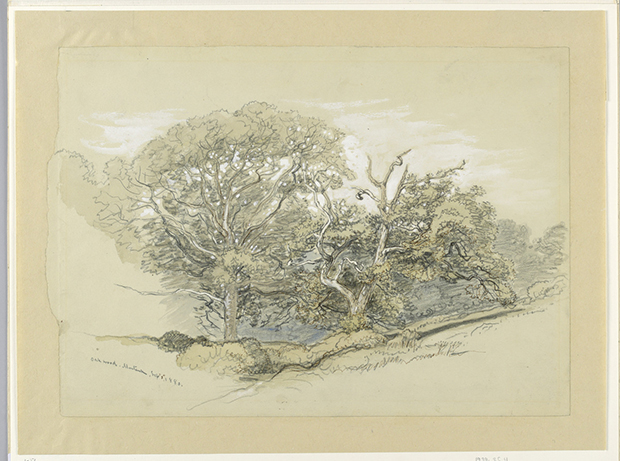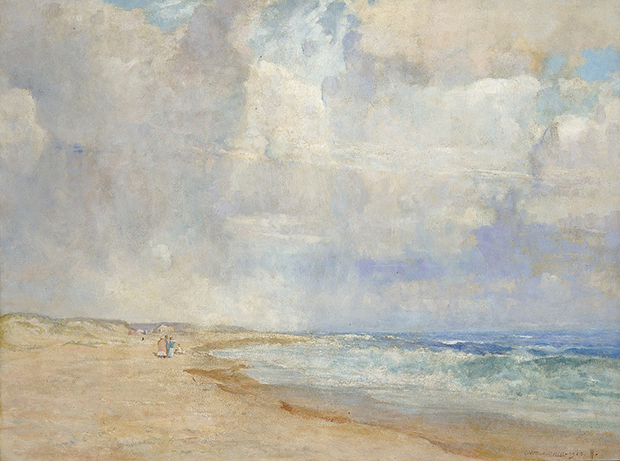History: Long Island Landscapes from the Smithsonian Collection
The Smithsonian released an enormous number of works (more than 3 million) to the public domain some years ago, including paintings, prints and sketches of Long Island under its Open Access program. The artwork below from the Smithosian’s various collections and galleries show a bit the beauty and wonder of our home depicted by famous and anonymous artists from long ago.

Photo: CC0. Smithsonian American Art Museum, Gift of Howard Russell Butler, Jr.
Long Island Coast. Howard Russell Butler, born New York City 1856-died Princeton, NJ 1934. pastel on grey paperboard. N.d.

Photo: CC0. Smithsonian American Art Museum, Gift of William T. Evans.
Shinnecock Hills. William Merritt Chase, born Williamsburg, IN 1849-died New York City 1916. oil on canvas. ca. 1895.

Photo: CC0. Smithsonian American Art Museum, Gift of Mrs. Samuel Colman.
Oak Wood, Montauk, New York. Samuel Colman, American, 1832–1920. Recto: Horizontal view of two oak trees appearing in a hilly foreground, one on right gnarled and savaged by age in contrast to one on left which stands erect and in full bloom. In distance are additional trees indicated by hastily shaded forms. Verso: Horizontal view of an enormous oak tree rising in central middle distance, in a vale between two wooded hillsides. Bushes grow around it. A road is shown in left foreground. Recto and verso: Graphite, pen and brown ink, brush and watercolor and white gouache on gray-green wove paper. September 8, 1880.
Photo: CC0. Smithsonian American Art Museum, Given in memory of Mr. and Mrs. I. A. Lipsig.
Long Island Homestead, Study from Nature. Andrew W. Warren, born Coventry, NY 1823-died New York City 1873. This intimate study, executed on the spot, captures the daily existence of an idyllic rural homestead. Sheep and cattle graze on the hill to the right. Several figures relax on the porch, while two women cut and bind sheaves of wheat in front of a pond. oil on paperboard. 1859.

Photo: CC0. Smithsonian American Art Museum, Gift of Mrs. Francis P. Garvan.
Old Hook Mill, Easthampton. Edward Lamson Henry, born Charleston, SC 1841-died Ellenville, NY 1919. In Old Hook Mill, Easthampton, a spirit of ease pervades the scene as men unhurriedly carry sacks of flour from the mill to the horse-drawn wagon. The Hook Windmill was the last wind-powered grain mill, or gristmill, built in East Hampton, New York. Constructed in 1806, it operated for a century until 1908 and stands today. Edward Lamson Henry's painting presents the iconic structure in the calm after a storm, indicated by two rainbows in the cloud-stricken sky. Critics praised Henry's work for his romantic treatment of agrarian life. oil on canvas. ca. 1880.

Photo: CC0. Smithsonian American Art Museum, Gift of Mrs. Samuel Colman.
Main Street, East Hampton, Long Island. Samuel Colman, American, 1832–1920. Horizontal view of a road leading backwards, flanked by rows of trees. Houses and a carriage are shown at left, with a rider standing under a tree, in the right middle distance.Graphite, brush and yellow-green,gray, brown, and black washes with white gouache on gray paper. August 11, 1880.

Photo: CC0. Smithsonian American Art Museum, Gift of William T. Evans.
After a Storm, Amagansett. Arthur Turnbull Hill, born New York City 1868-died New York City 1929. Arthur Turnbull Hill painted several images of Amagansett, Long Island, a popular subject for nineteenth-century American landscape painters. He used bright, translucent colors in this painting to evoke the fresh atmosphere that follows a thunderstorm. The dramatic clouds of the receding storm fill most of the canvas, dwarfing the tiny figures on the beach. oil on canvas. 1912.
